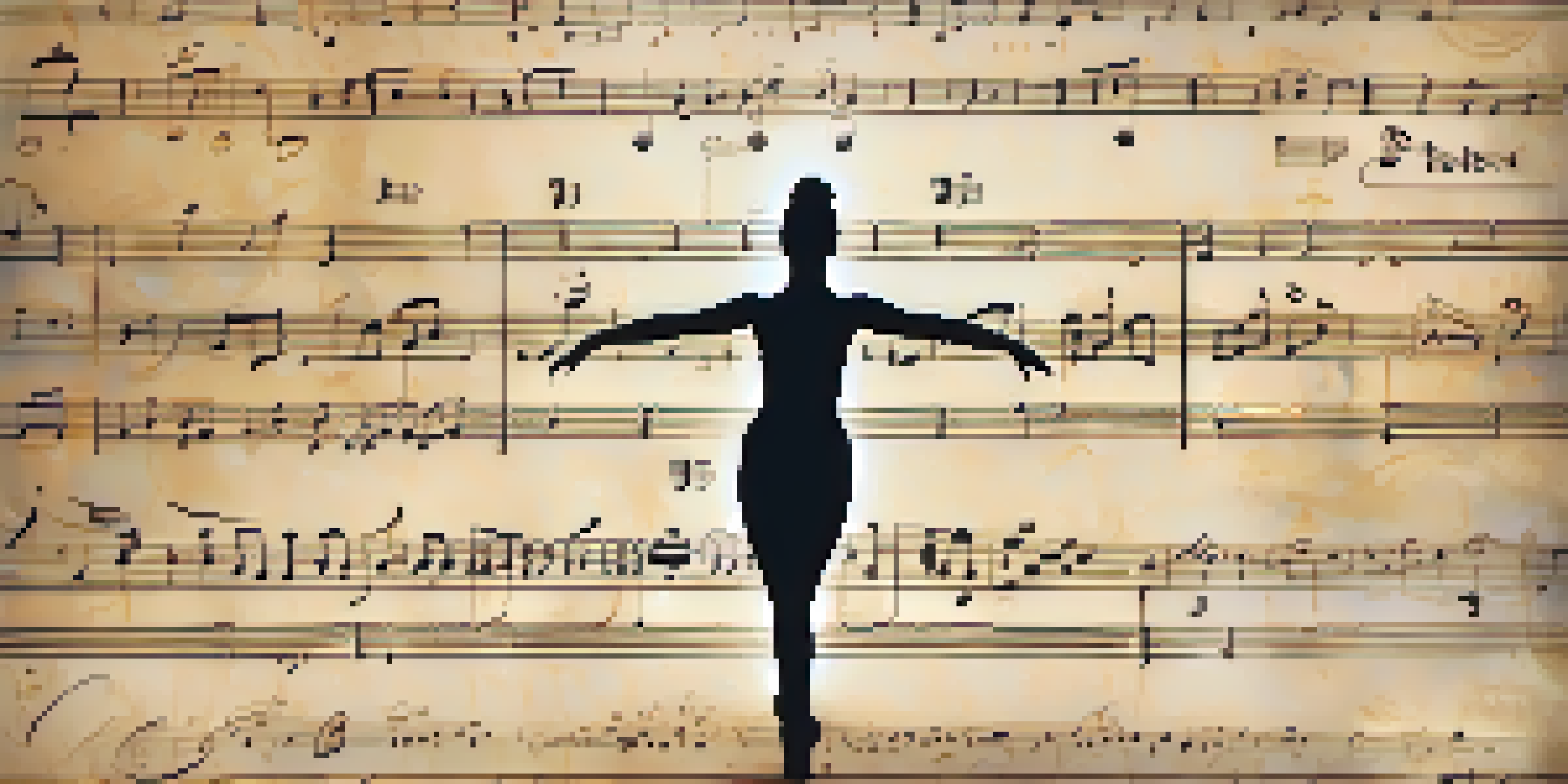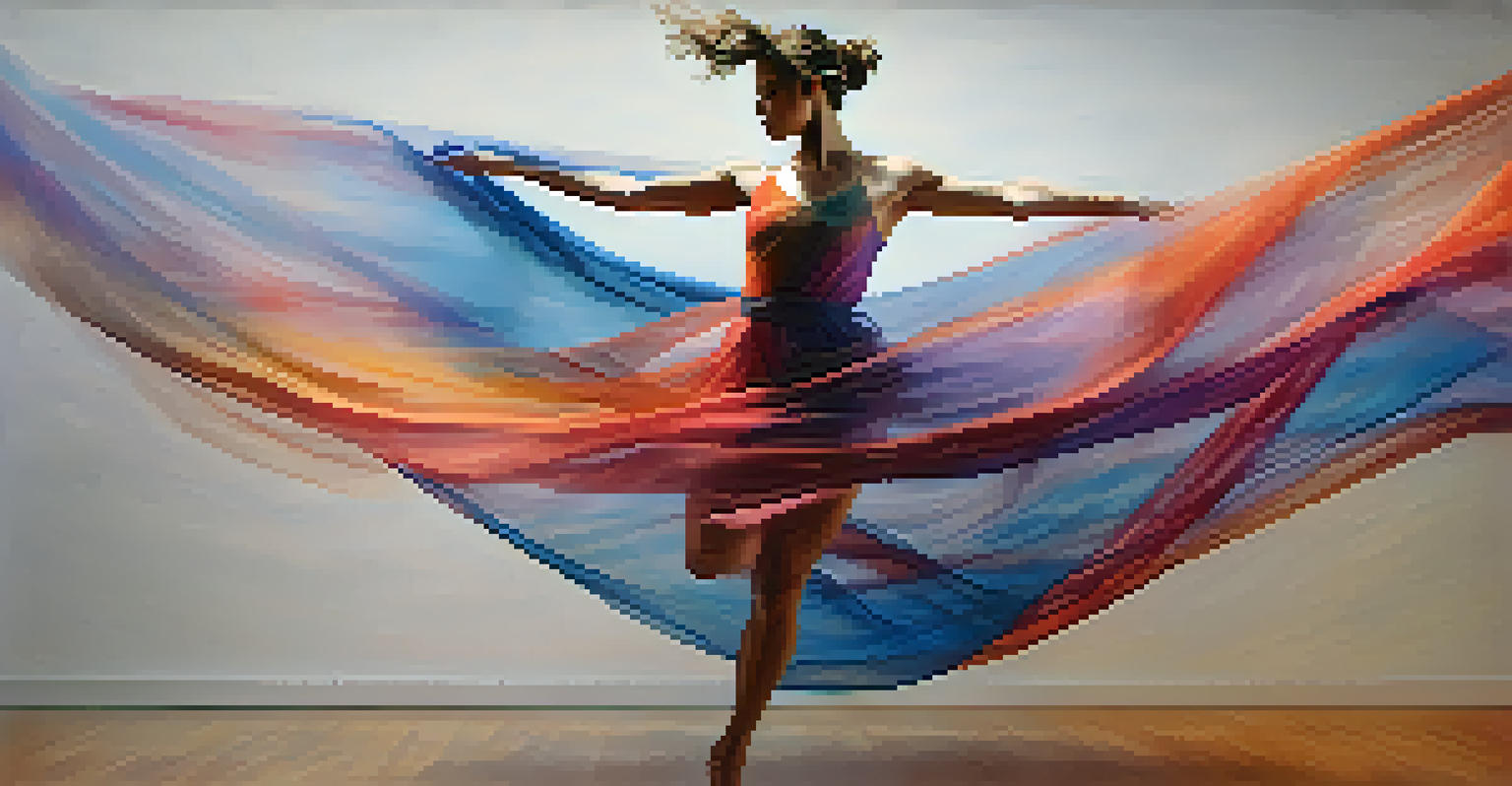Benesh Movement Notation: Structure and Application

What is Benesh Movement Notation and Why It Matters
Benesh Movement Notation (BMN) is a unique system developed to document and analyze movement. Created by Rudolf and Joan Benesh in the 1950s, it is particularly useful in the world of dance and physical performance. By translating movement into a visual language, BMN provides a way for choreographers and dancers to preserve and communicate their work more effectively.
Dance is the hidden language of the soul.
Imagine trying to remember every intricate step of a dance routine. Just like writing music notes helps musicians, BMN serves as a score for movement. This system captures the essence of dance, allowing for a deeper understanding of how movement can be represented on paper.
In an era where choreography can easily be lost or misinterpreted, BMN stands out as a vital tool. It offers a standardized approach to documenting dance, ensuring that future generations can appreciate and learn from the works of the past.
The Structure of Benesh Movement Notation Explained
At its core, BMN uses a combination of symbols and lines to represent various movements and positions. The notation consists of a staff, similar to musical notation, where movements are notated through specific symbols that indicate the nature of the action. For example, a curved line might signify a smooth movement, while a straight line could indicate a sharp or abrupt motion.

Each symbol corresponds to a particular body part and its movement, allowing for clarity in interpretation. This structured approach makes it easier for dancers to visualize and recreate choreography accurately. Think of it as a map for movement, where each symbol directs the dancer on how to execute the steps.
BMN Preserves Dance for Future Generations
Benesh Movement Notation provides a standardized method for documenting choreography, ensuring that dance works can be accurately preserved and taught to future dancers.
Additionally, BMN is versatile, accommodating various styles and forms of dance. This adaptability means that whether you're working with ballet, contemporary, or even folk dance, Benesh Movement Notation can effectively capture and communicate the nuances of each style.
Applications of Benesh Movement Notation in Dance
One of the primary applications of BMN is in the realm of choreography. Choreographers use this notation to document their creations, making it easier to teach and reproduce their work. This is particularly beneficial when dealing with complex pieces where memory alone may not suffice.
Movement never lies. It is a barometer telling the state of the soul’s weather.
In educational settings, BMN serves as an invaluable resource for students learning dance. By studying BMN, students can gain insights into the mechanics of movement and develop a more profound appreciation for the art form. It's akin to learning a foreign language; the more you practice and understand it, the more fluent you become in expressing yourself through dance.
Moreover, BMN is also applied in research and analysis. Dance scholars and practitioners can study notated works to understand movement patterns, styles, and even cultural influences, fostering a deeper connection between technique and tradition.
The Role of Technology in Benesh Movement Notation
With advancements in technology, BMN has found new applications in digital formats. Software programs now allow for the creation and sharing of BMN scores electronically, making it easier for choreographers and dancers to collaborate and archive their work. This digital aspect enhances accessibility and encourages broader use of the notation system.
Additionally, video analysis tools can complement BMN by providing a visual reference alongside the notation. This fusion of technology and notation helps dancers understand the subtleties of their movements and refine their techniques. Imagine having a high-definition video of a performance alongside a detailed score—this combination can significantly elevate the learning experience.
Technology Enhances BMN Usability
Advancements in technology allow for digital formats of BMN, facilitating collaboration and improving accessibility for choreographers and dancers.
As technology continues to evolve, so does the potential for BMN. Future developments may lead to even more innovative ways to document and analyze movement, making it an exciting time for dance documentation.
Challenges and Limitations of Benesh Movement Notation
Despite its many advantages, BMN is not without its challenges. One significant limitation is its complexity; for newcomers, the learning curve can be steep. Understanding the notation requires time and practice, which may deter some dancers or choreographers from fully embracing it.
Another challenge lies in the subjective nature of movement interpretation. While BMN aims for precision, different dancers may interpret the same notation in varied ways based on their unique styles and experiences. This subjectivity can lead to discrepancies in performance, making it essential to have clear communication between choreographers and performers.
Lastly, the evolution of dance styles poses a challenge for BMN's adaptability. As new forms of dance emerge, there may be a need to expand or modify the notation system to accurately capture these movements. This ongoing development is crucial to ensure that BMN remains relevant in the ever-changing landscape of dance.
The Future of Benesh Movement Notation
Looking ahead, the future of BMN seems promising, especially with the increasing interest in dance documentation. As more choreographers and dancers recognize the value of notation, we may see a resurgence in its application across various dance forms. This shift could lead to a richer archive of dance history, preserving works that might otherwise be forgotten.
Furthermore, collaborations between dance practitioners and technology developers could foster innovative tools that enhance BMN's usability. Imagine apps that allow dancers to visualize their movements in real-time based on BMN, making learning and practice more interactive and engaging.
BMN Faces Challenges in Interpretation
While BMN is a valuable tool, its complexity and subjective nature can lead to varied interpretations among dancers, highlighting the need for clear communication.
Ultimately, as the world of dance continues to grow and evolve, BMN will likely adapt alongside it. The ongoing dialogue between tradition and innovation will ensure that Benesh Movement Notation remains a key player in the documentation and analysis of movement for years to come.
Conclusion: Embracing Benesh Movement Notation
In conclusion, Benesh Movement Notation offers a comprehensive framework for documenting and analyzing dance. Its structured approach not only aids choreographers in preserving their work but also serves as an educational tool for dancers at all levels. As we embrace this notation system, we open the door to a deeper understanding of movement and its representation.
While challenges exist, the potential for BMN to adapt and grow is undeniable. The integration of technology and the increasing appreciation for dance documentation will likely lead to a more widespread adoption of BMN in the future. This evolution is essential in ensuring that dance continues to thrive as an art form.

By recognizing the value of Benesh Movement Notation, we not only honor the past but also pave the way for future generations of dancers and choreographers. Ultimately, BMN is more than just a notation system; it’s a bridge connecting movement, creativity, and expression.